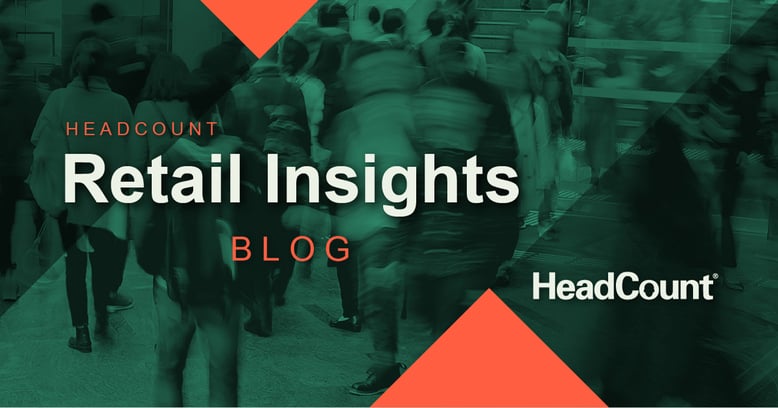Customer Experience and Conversion Analytics — Which Do You Need Most?
Most retailers already have powerful data to help understand and improve customer experience (CX) — but they forget to use it. Don't waste money on random Mystery Shop and CSATs until you know precisely when and where to targeted your customer research.
Do you have:
- Traffic Data
- Sales Data
If so, read on to find out how you can use this data to help you improve customer experience. .
To start, we know that customer experience doesn't correlate to sales. So, what does it correlate to? Customer conversion.
Customer Conversion
Customer Conversion Is calculated by dividing sales transactions by traffic and is a quick and simple measure of Visits (Shoppers) versus Purchase.
Customer Conversion is a function of all those things that make a great customer experience in-store and that ultimately lead to a sale. In short, prospects are converted into customers when they have a good customer experience. Therefore, Conversion is an excellent proxy for Customer Experience (CX).

Think of everything that makes up the customer experience in your store. Staff, merchandising, product mix, pricing, inventory, the store atmosphere, and intangibles that make a store’s unique customer experience truly unique.
Customer Conversion Rate is an important indicator of areas where there may be Customer Experience (CX) issues:
- Uninformed staff
- Long lines at check-out
- Poorly merchandised displays
- Stock-outs
These are all just a few of the many issues that create bad customer experiences and they also drive down conversion rates.
In fact, they are so related, we could easily replace the 'Customer Conversion' label in the fundamental framework with 'Customer Experience (CX)' as shown below.

How does this help you?
Mystery Shop and Customer Surveys are research techniques meant to provide retail management with an understanding of the factors that create a store environment conducive to prospects making a purchase – conducive to prospects being converted into buyers. Traffic and customer conversion data provide insight into where and when you may have customer experience (CX) issues and where you would want to invest your research dollars to investigate further.
If conversion rates are sagging in a store and overall traffic levels aren’t increasing, what do you immediately think? It would be reasonable for you to wonder what’s going on in the store that is driving down conversion of shoppers to buyers. You could then pinpoint the hours of the day to investigate the issues.
Your limited research dollars could then be focused on hours of the day in specific stores where you already know you have issues.
If conversion rates are sagging but traffic is up significantly, then the drop in conversion rate could mean your staff are overwhelmed and just not able to manage the number of shoppers. While this is still a problem, it’s a different problem, and you would better understand how to start solving the problem.
Could traffic and conversion analysis completely replace CX measurement programs?
Essentially, when you look at your traffic and conversion data at an hourly level, you have a non-stop stream of in-store experience data. Customer conversion is a good proxy for customer experience, and provide you a constant stream of insights.
But, the simple fact is that the greatest insight is achieved when both data sets are combined.
Traffic and customer conversion provide answers about 'when' and 'where' in-store customer experience issues may be occurring, while CSAT and Mystery Shop data can help you understand and answer the 'why' and the 'how'.
EXAMPLE: Traffic and customer conversion analysis might tell you that customer conversion rates are consistently sagging in a particular store at a particular time — and you can quickly see that these sags are not a result of more traffic in the store. Now you know exactly when and where to research further.
Customer Satisfaction and Mystery Shop answer different questions
CSAT data and Mystery Shop play a vital role in helping management understand circumstances and specifics about what may be causing conversion rates to sag.
- Is there a problem with staff scheduling that’s causing bottlenecks at the cash-out?
- Could it be that poor merchandising that’s making products hard to find?
- Are poorly trained staff slow to serve or lack product knowledge?
Traffic and customer conversion data alone can’t answer these questions. However, these are exactly the kinds of answers that customer satisfaction research and Mystery Shop can help answer.
If a Mystery Shopper is dispatched to a store with a low conversion rate and upon arriving finds the store well merchandised and stocked but can’t find an Associate and sees the check-out line extending halfway around the store, it’s not hard for management to solve the problem.
"Traffic and customer conversion analytics should be constantly monitored to identify customer experience issues. CX measures should be used to help formulate theories about what’s driving the conversion rate sags and to decide on the steps needed to resolve the problem". Mark Ryski
To improve your sales, you need to understand what lever to pull. Traffic and customer conversion help you do that.
